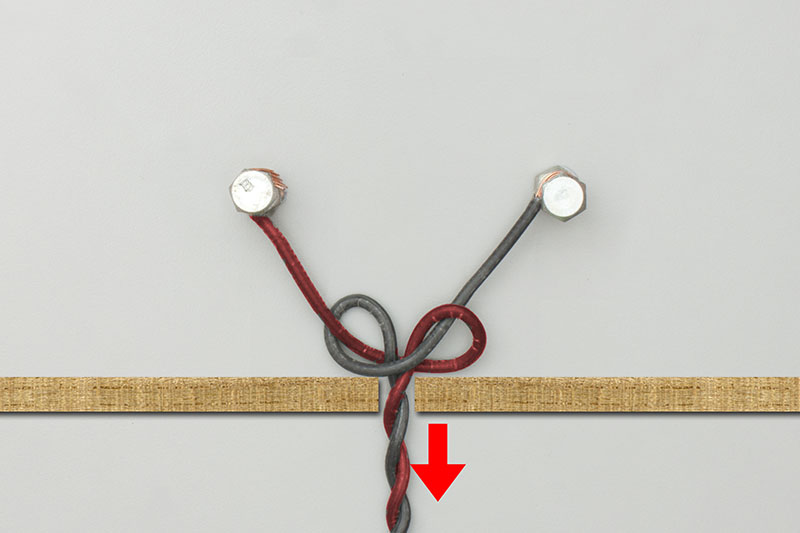A two-strand crown knot; prevents tension on terminals.
Underwriter’s Knot
A two-strand crown knot; prevents tension on terminals.
 |  |

 |  |  |  |  |
To Step use Arrow Keys (
Origin: This knot was described by Ashley as a Wall Knot of two strands. He wrote: “I can recommend it unhesitatingly to electricians in general for employment where rough treatment is expected.” (ABOK # 237, p 44.) It is known as the Underwriter’s Knot – presumably because fire underwriters know that the strain relief reduces the risk of fires and electrocution.
Tying it: The two strands wrap around each so that each strand exits the knot away from the standing end. This is the same technique employed when tying a Three-Strand, or Four-Strand, Wall Knot.
Strain Relief: When finished and installed, the knot should be snug against the housing and both terminal leads should have a little slack. Then, strain on the line is taken by the knot and does not affect the connections.





